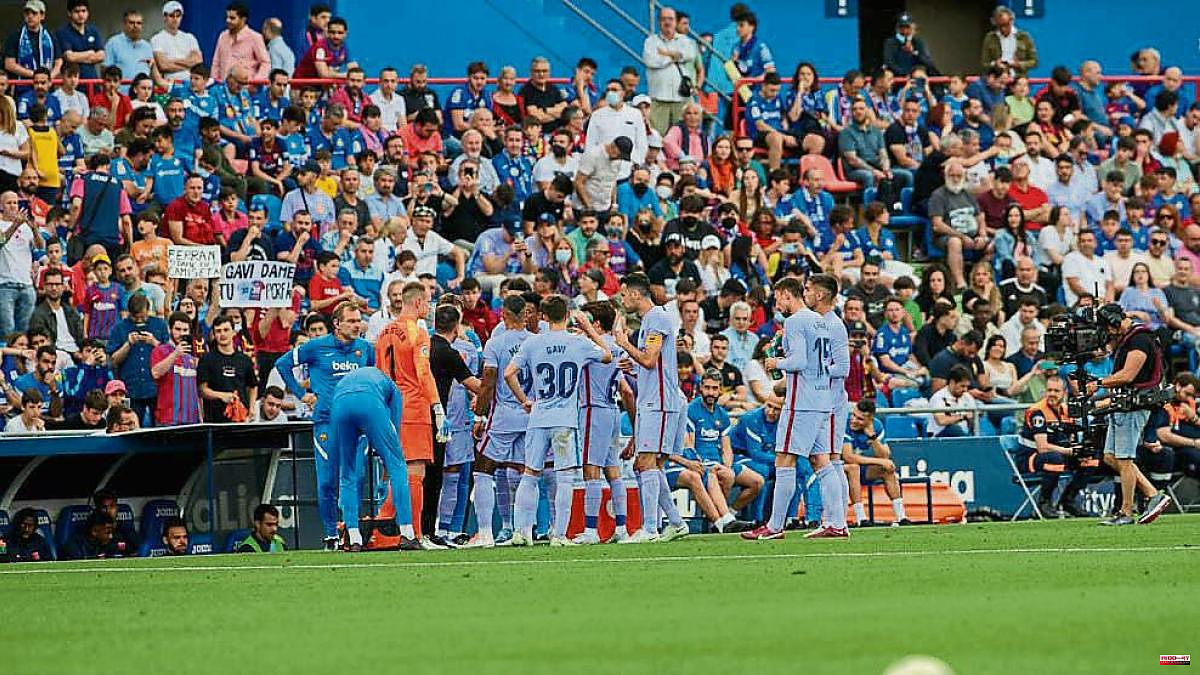The price of electricity rises again today above 200 euros. Specifically, the regulated rate will be paid at 202.99 euros. The cheapest section is from 17 to 18 hours, where the price per megawatt hour will be paid at 242.74 euros, and the most expensive, from 7 to 8 hours, where the price per megawatt hour will be paid at 164.99 euros.
March was the most expensive month of the year so far and registered the historical maximum. However, in April the 'pool' fell to levels more similar to January and February, when it moved slightly above 200 euros per megawatt hour. Much of the blame lies with the irruption of photovoltaic energy, which on some days has contributed to lower prices during central hours.
It happened for example on April 8 and 10. Solar production, together with wind power, managed to expel gas from the price formation during peak hours, which supposedly are the most expensive for including higher charges and tolls than in the flat and valley periods. On April 10, between 3:00 p.m. and 7:00 p.m., prices collapsed to close to zero. A situation that was repeated on the 23rd, between 11:00 and 18:00.
The greater participation of renewables in setting prices is one of the hopes that the electricity bill will drop to acceptable levels. The other goes through the limitation of the price of natural gas in the wholesale electricity market (the 'pool').
The combined cycles, which produce electricity from this natural gas hydrocarbon, mark the price of the 'pool' at certain times. And although there are not many, it exerts a dragging effect on the offers of other generation technologies. Hence the importance of putting a cap on the price of natural gas.
Spain has just approved this containment mechanism, known as the Iberian gas exception. It assumes that the gas reference price will be capped at 48.48 euros/MWh for twelve months. This measure will mean reducing the average price of electricity in the wholesale market from the 210 euros marked in the first quarter to 130 euros (40% less).
However, this mechanism is pending review by the European Commission, which will study and validate the text approved by the Spanish Council of Ministers. The European supervision will delay the moment in which the consumers of the regulated market (the PVPC) begin to notice the reduction in the electricity bill, something that will happen at the earliest in mid-June.
However, the Minister of Ecological Transition, Teresa Ribera, stresses that free market users will also benefit from this initiative as their supply contracts expire and have to be renewed.
What the central government has been able to do so far to lower the price of the electricity bill is to modify the charges of the electrical system. It is one of the components of the regulated part of the bill - the other is made up of tolls - and is used to pay concepts such as incentives for renewable energies, part of the costs of bringing energy to the islands, or the amortization of the deficit rate.
The amount of these charges has been reduced - from March 31 to December 31 - compared to those approved at the end of last year. A measure that will somewhat lower both the price of the contracted power and that of the energy consumed. In addition, it has also been decided to extend the reduction of the Electricity Tax to 0.5% -the minimum allowed by Europe- and VAT -it continues at 10%- until next June 30.
The evolution of the daily wholesale electricity market directly affects the users of the regulated rate, the so-called Voluntary Price for Small Consumers (PVPC). However, the consumers of the free market -in which a price is agreed with the marketer on duty for a certain period of time- are also affected by the high prices of the electricity market when renewing their contracts.
The increase in the price of the electricity market began in early 2021, months before the new rate structure came into force. This price scheme establishes for domestic consumers two periods of contracted power (peak and off-peak) and three energy periods (peak, flat and off-peak). The difference in prices between the sections lies in the tolls and charges, which are higher at the peak (from 10:00 a.m. to 2:00 p.m. and from 6:00 p.m. to 10:00 p.m.), intermediate in the flat (from 08:00 to 10:00 a.m. and from 2:00 p.m. to 6:00 p.m.), and more affordable in the off-peak period (from 00:00 a.m. to 8 a.m., as well as all weekends and national holidays) .
With these changes, it was intended to shift consumption to times when energy demand is lower, to avoid an overload of the networks that would have led to a greater investment in these infrastructures, with the consequent increase in the cost of the bill.
However, a greater contribution from renewables can - and this has been seen on certain days - disrupt this scheme, so that some flat and peak hours - the power plants of the day, especially - are sometimes cheaper than those of the schedule Valley. To find out what price PVPC users will pay for the kilowatt hour consumed the following day, you can consult the Red Eléctrica website.
Getting a cheaper bill involves changing a series of habits. The first of them, consume as much as possible within the valley sections. Another interesting piece of advice is to adjust the contracted power as much as possible, because many times you have more than what is actually used.
Before the generalization of digital meters, it was almost impossible for a domestic user to know how much electrical power he used. But with new measurement devices, everyone can access that data.
Distributors -the owners of the 'cable' through which electricity reaches the point of consumption- already offer this information on their web pages and mobile applications. In Euskadi it can be done through the i-DE website, the name with which Iberdrola has baptized its distributor.
Another way to lower your electric bill is to use appliances efficiently. For example, choosing programs that work at low temperatures in the washing machine or dishwasher, turning off the electric plates or the oven before the end of the cooking time to take advantage of the residual heat, or eliminating the 'stand by' to turn off completely the devices.
7












